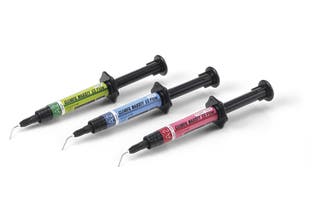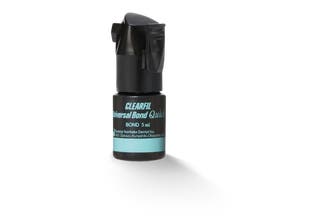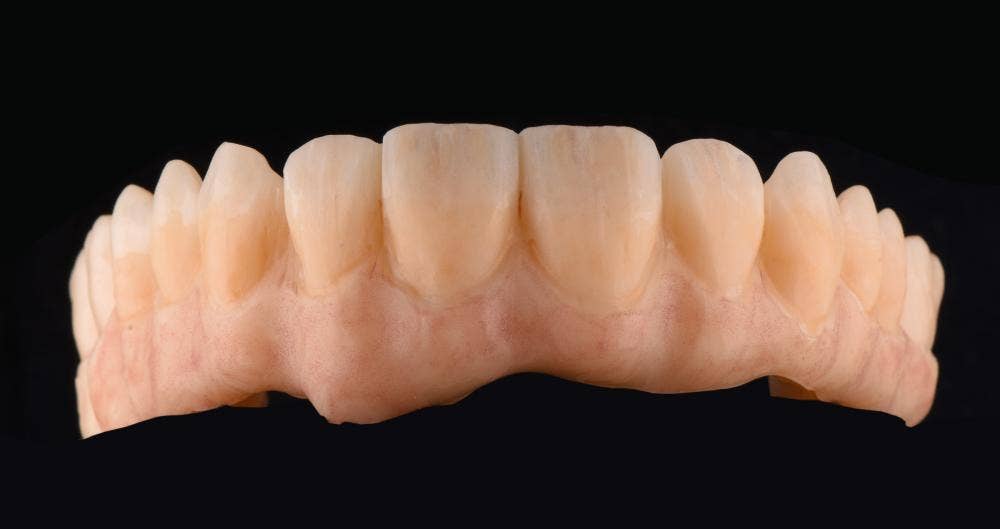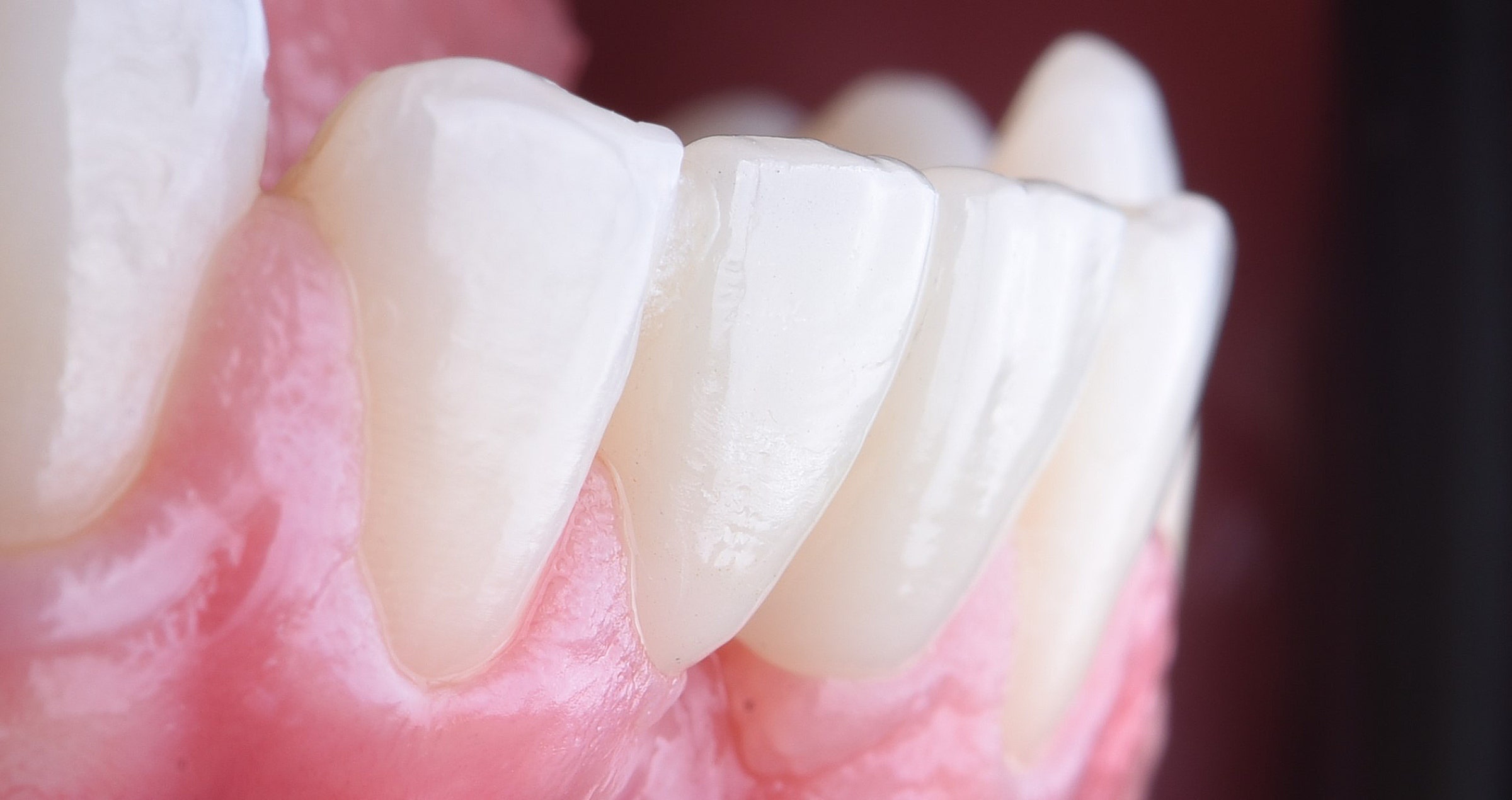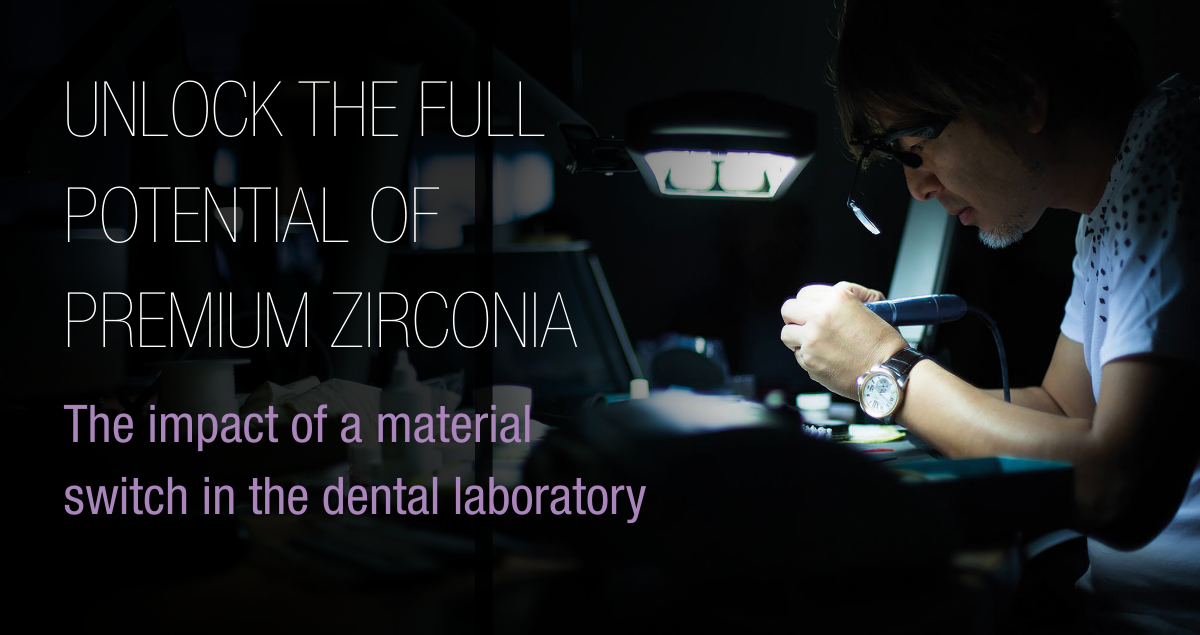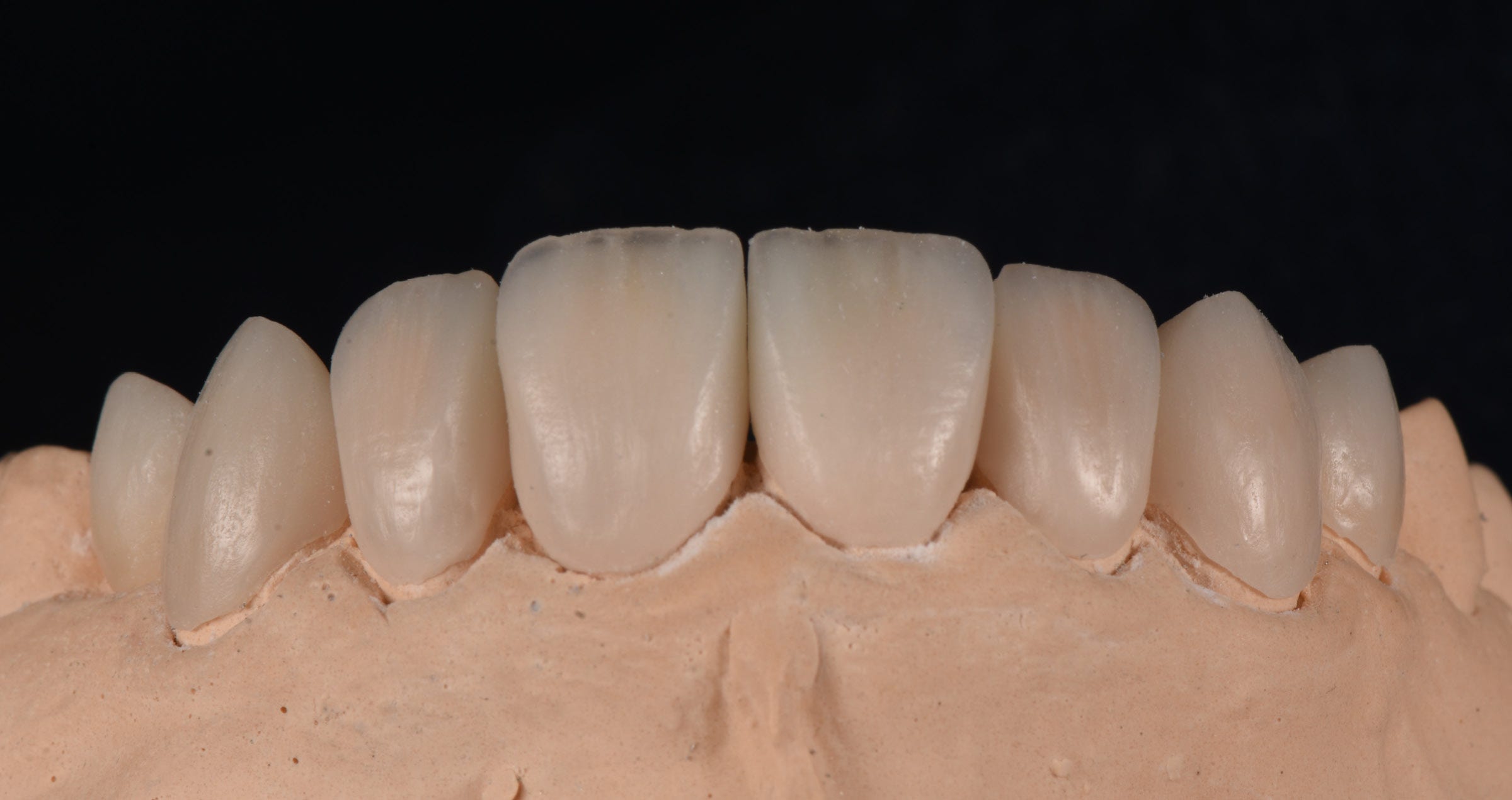
Flowable injection technique: simple, prévisible et reproductible
Interview with Dr. Michał Jaczewski
The flowable injection technique is becoming a popular technique used to aesthetically restore multiple teeth with flowable composite. A renowned instructor who teaches dental practitioners the skills needed to use the technique successfully is Michał Jaczewski. He graduated from Wroclaw Medical University (Poland) in 2006 and runs his own private practice in the city of Legnica since 2011. He is the founder of the Biofunctional School of Occlusion, which conducts trainings in the field of comprehensive dental treatments, and is passionate about aesthetic digital dentistry. At the International Dental Show 2023 in Cologne, he showed us when, why and how he uses flowable injection in his dental office.
Could you please describe the technique in a few words?
The flowable injection technique is a simple, predictable, repeatable way to restore teeth using flowable composite. It is based on a wax-up, over which a silicone index is produced. This index then serves as the key for the injection of the flowable composite, which is light-cured through the transparent silicone. The most important benefit is that this technique works without or in some cases with a very minimal tooth preparation. It is a minimally invasive technique that can be used by beginners and by experienced dentists. Using a composite with a well-balanced opacity in a thickness of 0.3 mm and a special polishing protocol, it is possible to achieve excellent morphological and optical outcomes.
When did you start using the flowable injection technique and what are its major indications?
I started using the technique in 2018. It was originally invented to restore anterior teeth, but nowadays, it is successfully used in the posterior region as well. To my mind, it is particularly useful whenever the shape of multiple teeth needs to be corrected to improve a patient’s smile, no matter whether young or old. This may be the case after orthodontic treatment. The teeth are simply aligned and then restored to the perfect shape using this non-invasive technique. I also use flowable injection for a smile makeover, to restore worn teeth and to change the vertical dimension of occlusion in the context of full-mouth reconstructions. In the latter case, the restoration may be temporary and used for a mid- to long-term “test drive”. However, it can also serve as the final restoration.
How do you start when planning to restore a patient’s teeth with the flowable injection technique?
The most important phase heavily influencing the success of this technique is the planning phase. It consists of documentation, impression taking and the creation of a wax-up and mock-up as well as the production of the silicone index. You can of course work in the traditional way with a silicone impression and conventional wax-up, but the use of digital technologies in this phase will improve your workflow significantly. I usually start with photo and video documentation and a digital impression. Records of the centric relation and occlusion are needed as well. Then, a virtual wax-up is created using digital smile design software. In this step, it is important to take into account the facial characteristics of the patient, a task that is best accomplished using the facial flow concept. Based on the resulting design, a virtual treatment outcome can be displayed and discussed with the patient. Once approved, the model with wax-up is printed in different versions: the full wax-up model and an “interlip model” with an alternating design – one tooth with wax-up followed by one tooth without. These models are used to produce the required indexes made of transparent silicone.
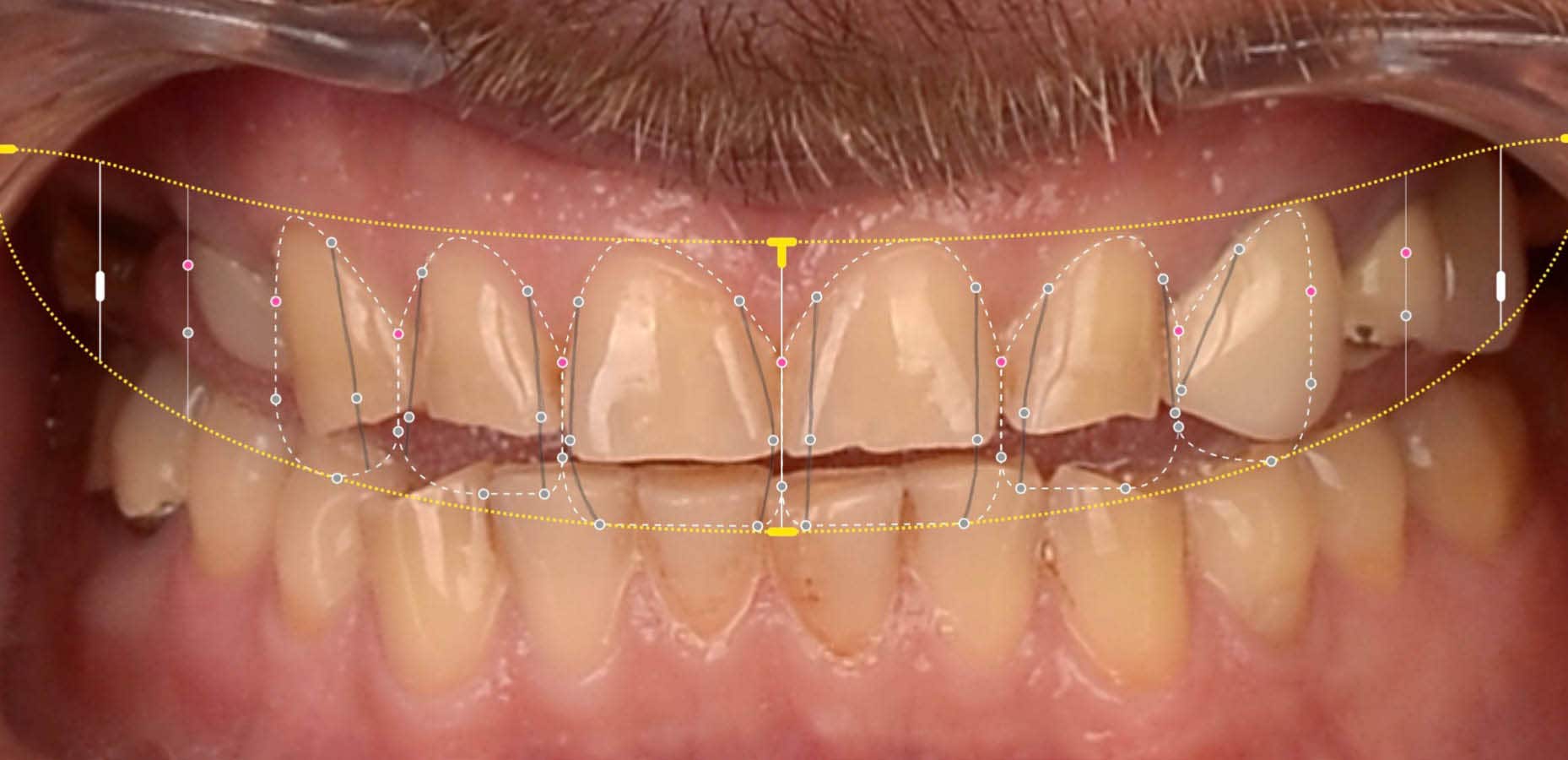
Digital Smile Design: Patient with severe tooth wear.
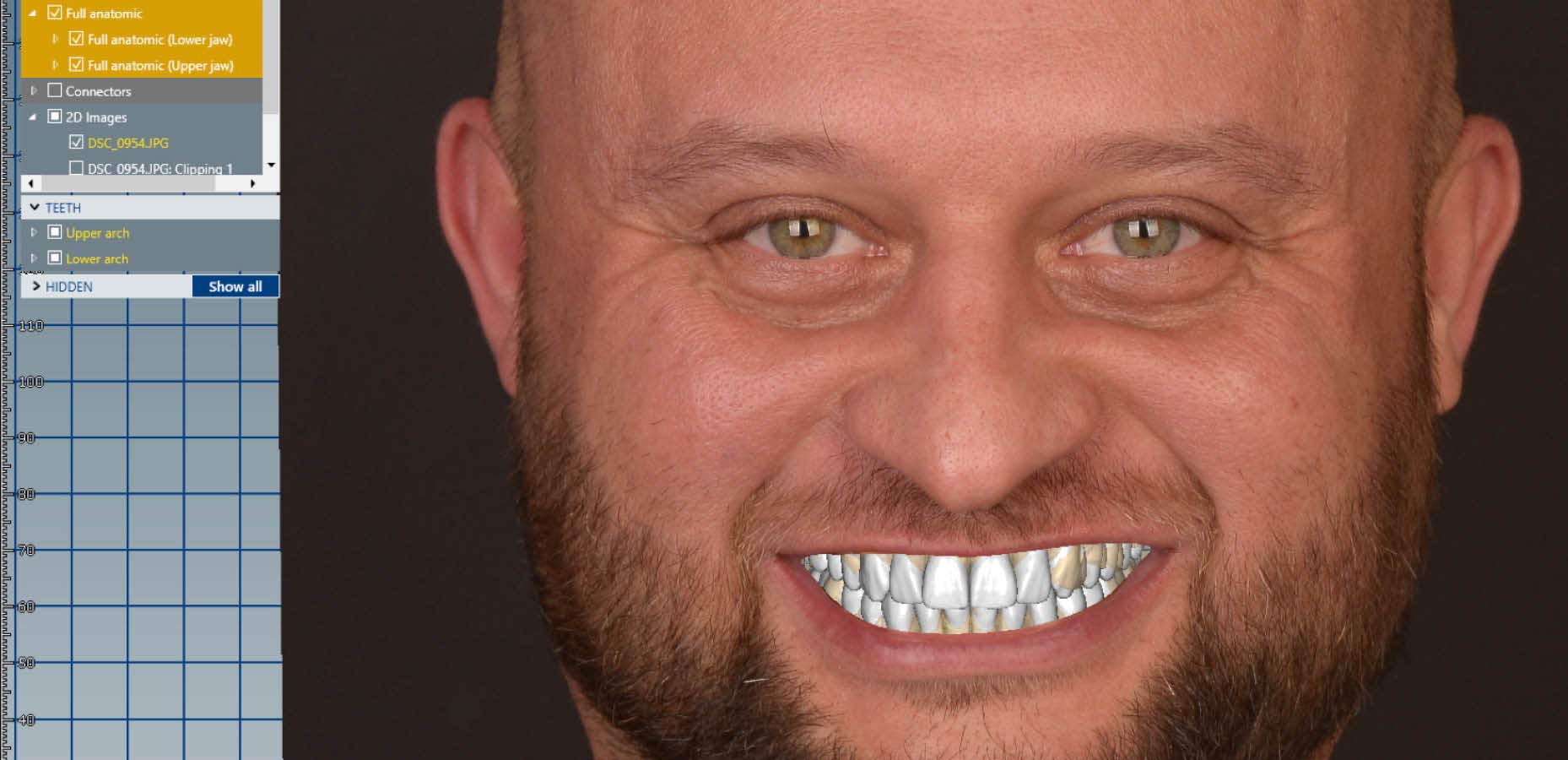
Virtual wax-up displayed in the patient’s mouth.
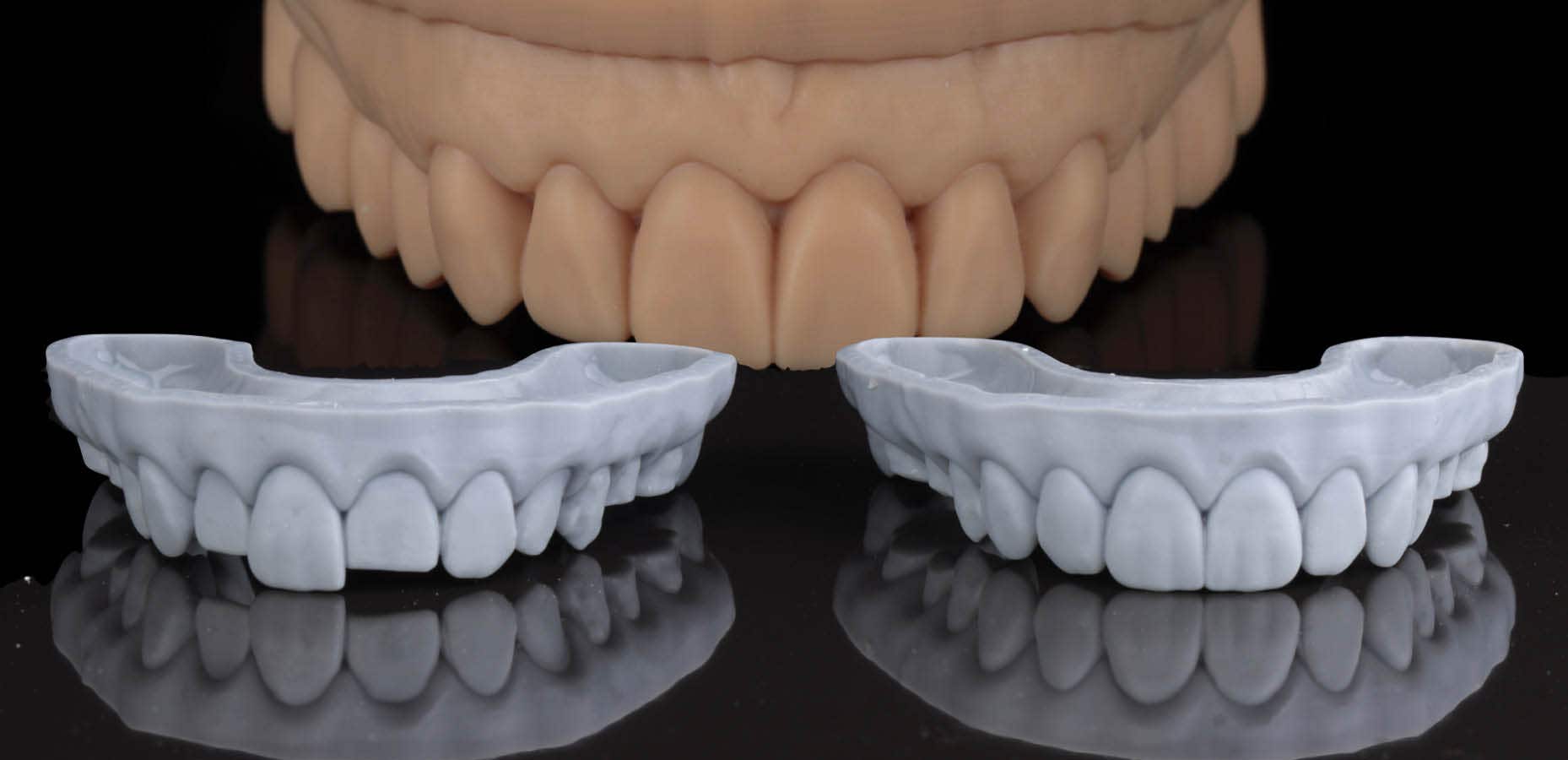
Models printed on the basis of the virtual mock-up.
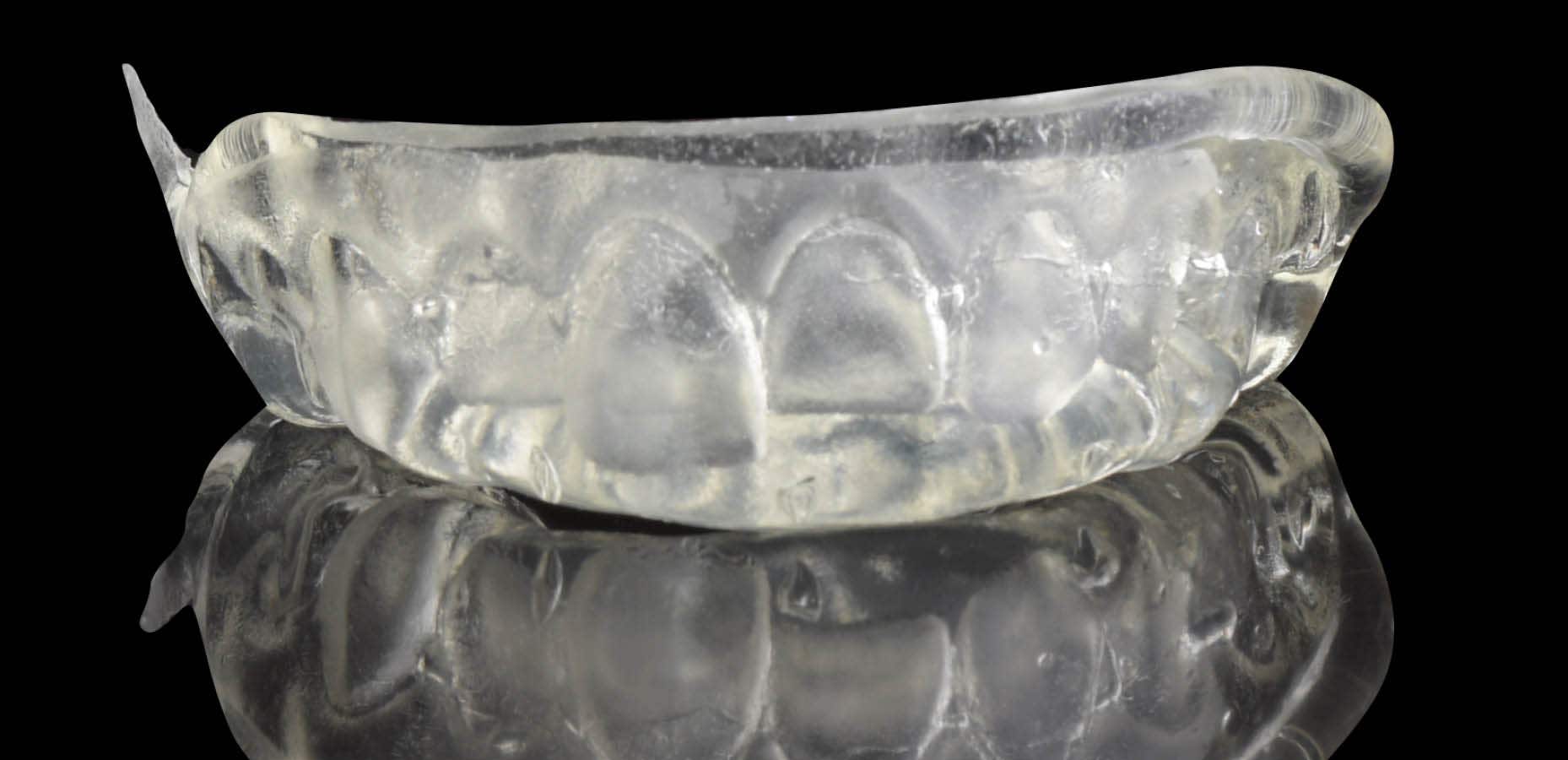
Silicone index produced on the alternating (interlip) model.
When and why do you produce more than one silicone index?
It is particularly useful to work with the complete and the alternating (partial) silicone index when planning to restore all teeth in the maxilla. Starting with the alternating index gives me additional stability and lays the foundation for a precise outcome especially with regard to the planned occlusal height. In the lower jaw, where the handling of the index and the composite is more difficult due to the presence of saliva and moving soft tissues, I always recommend to divide the working field into three sections – one anterior and two posterior regions – and work on them separately.
How do you prepare the teeth and inject the flowable composite?
In most cases, all we need is a roughening of the enamel surfaces for the bonding procedure, which is usually possible by air abrasion with aluminum oxide (50 μm at low pressure). Then, the enamel is etched with phosphoric acid etchant and a universal bonding agent is applied. The silicone index is equipped with an injection hole on the incisal edge. This is easily accomplished with the cannula of the flowable composite syringe pressed through the material from the inside to the outside. In the posterior region, it may be useful to utilize a harder material and integrate two holes for each tooth on separate cusps – one for the injection and one for the outward flow. On a hard index, a diamond bur is needed for this procedure. I place the index, inject the flowable composite from the bottom to the top, light-cure the material shortly and remove the index. Final polymerization is carried out after index removal and the application of a layer of glycerin gel. Once the excess material is removed and the proximal part of the restoration is finished perfectly, the procedure is repeated for the other teeth before the restorations are polished.
Do you have any favourite products for the technique?
For the silicone index, I use EXACLEAR (GC), as it is the most transparent silicone available on the market. My favourite composite for the flowable injection technique is CLEARFIL MAJESTY™ ES Flow of low viscosity (Kuraray Noritake Dental Inc.). In my dental office and during my courses, I had the chance to test a lot of different products. In this context, I found that the material from Kuraray Noritake Dental offers a few advantages. It is a modern type of nano composite with a wide range of indications and a large shade offering. With its three viscosities, it can be used in many different clinical situations. I started using it five years ago and for the flowable injection technique, the Low variant is my first choice, as it is the most universal one suitable for anterior and posterior teeth. The most decisive advantages that influenced my decision to use it are its natural aesthetics and superior polishability. You can achieve a spectacular effect without any special skills. As a bonding agent, I prefer to use CLEARFIL™ Universal Bond Quick, which makes my workflow even easier, faster and more predictable. For polishing, I have developed my own protocol.
How do you finish and polish your restorations?
I start in the proximal area with polishing strips and sometimes a proximal saw. For shape adjustments, three different diamond and carbide burs have proven their worth. Subsequently, I proceed with fine or extra fine Sof-Lex™ Finishing and Polishing Discs (3M) used for contouring and finishing and rubber polishers TWIST DIA™ for Composite (Kuraray Noritake Dental Inc.), which already create a nice, natural surface gloss with low effort. Then, a wheel brush made of goat hair is used with diamond polishing paste (Diamond excel, FGM) and finally, I use a cotton wheel along with an aluminum oxide polishing paste (Pasta Grigia II, anaxDENT). In this way, it is possible to create a mirror finish.
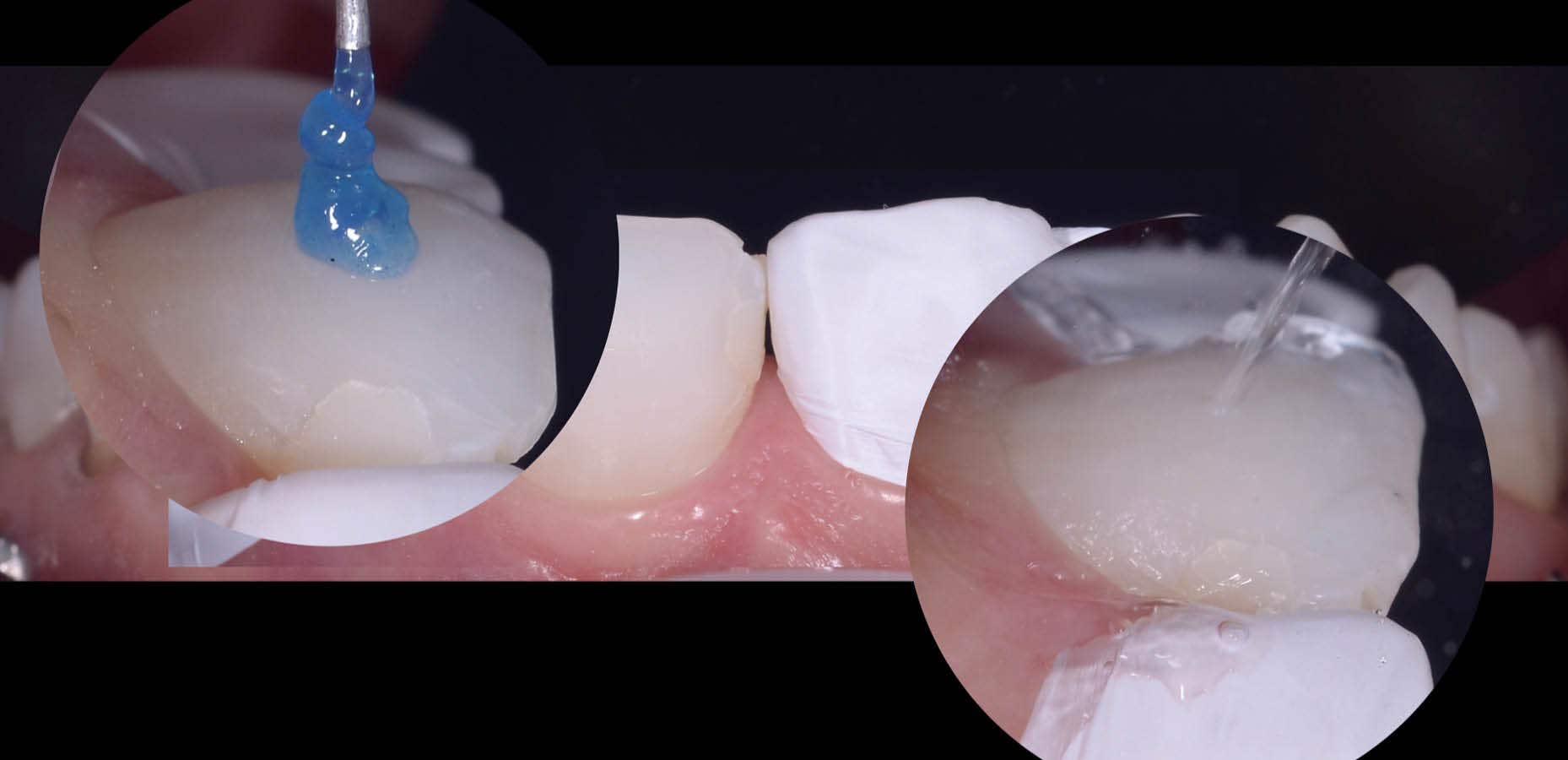
Etching of the enamel with phosphoric acid etchant.

Complete silicone index in place.
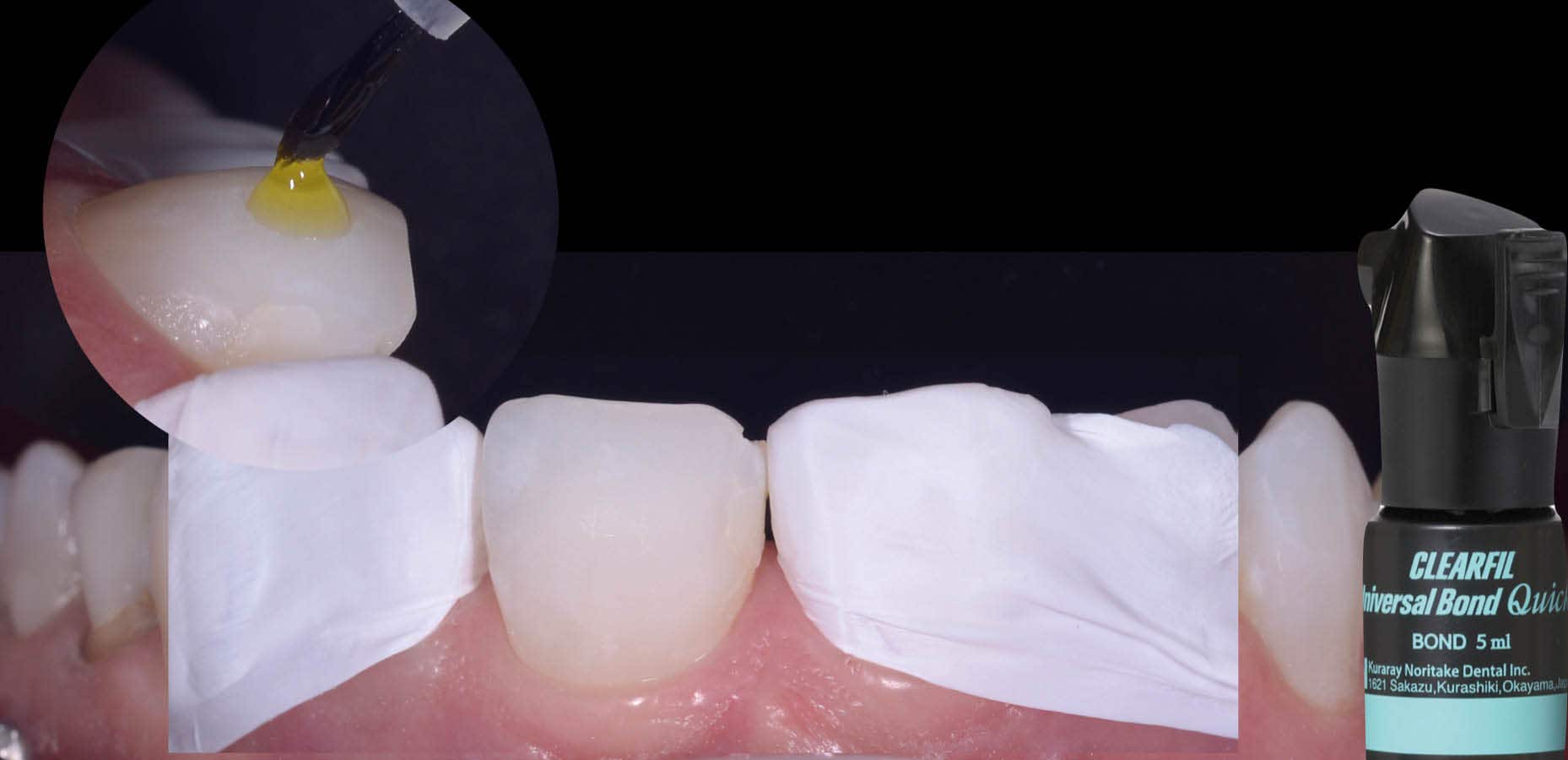
Application of CLEARFIL™ Universal Bond Quick.
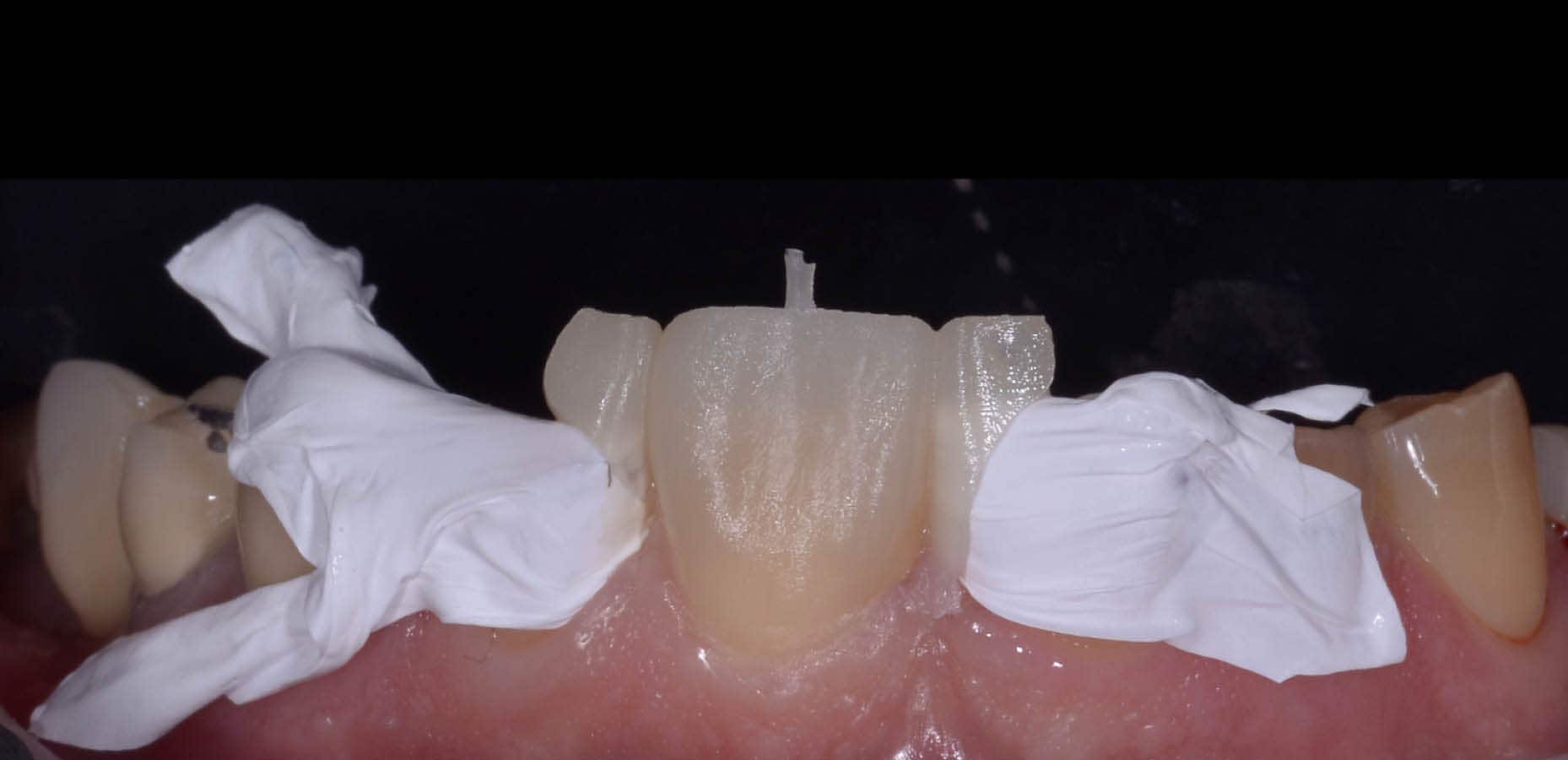
Situation immediately after the injection of CLEARFIL MAJESTY™ ES Flow (Low), light curing and removal of the silicone index.
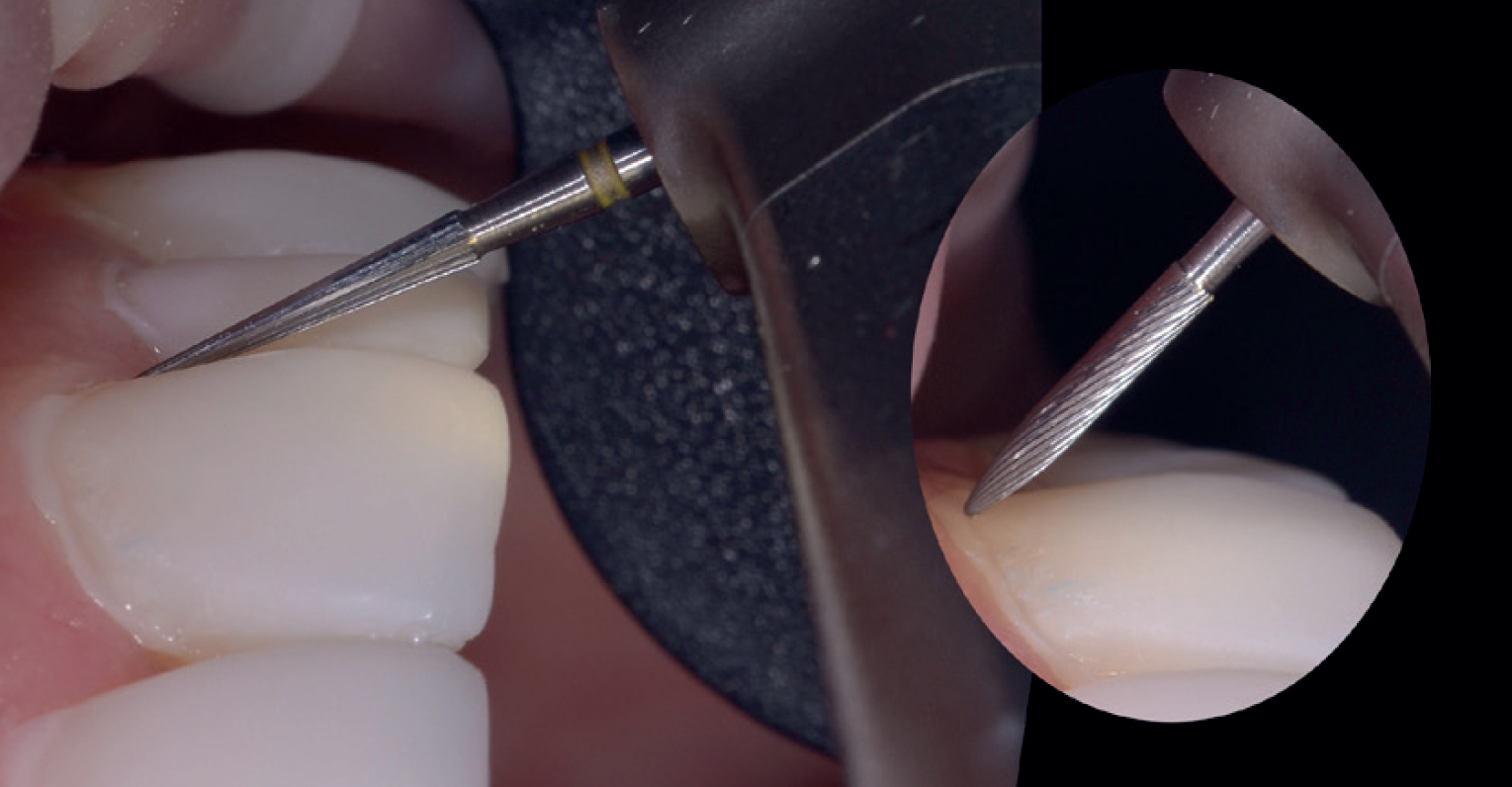
Proximal adjustments with rotating instruments.
What are the biggest benefits of the flowable injection technique?
For patients and dental practitioners, the biggest advantages are savings in time and money. Many patients cannot afford ceramic veneers, and they are extremely happy to be offered a high-quality alternative that can be delivered in a single appointment. The procedure is prepless and the restorations can easily be repaired or the colour changed if they wish, so that there is virtually no risk involved in the treatment. Dental practitioners are usually able to start treating patients after they have attended a single course. While practicing makes them perfect, the first results are often already quite impressive, so that there is no huge investment involved for beginners – neither in time nor in new materials. Of course, you can invest lots of time in the finishing and polishing procedure, but I am sure you will find the right balance between effort and outcome.
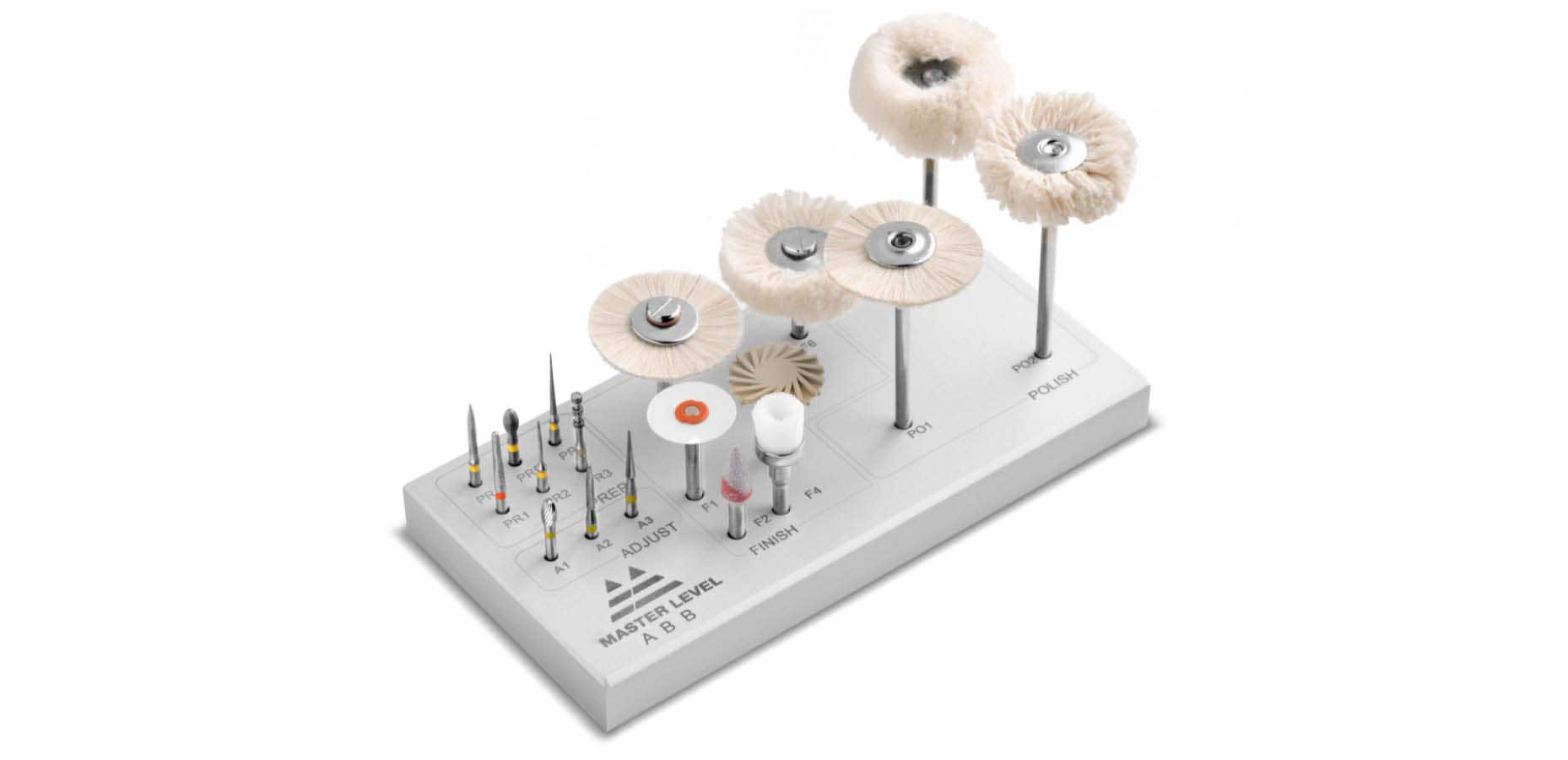
Set of instruments for the flowable injection technique.
Do you have any recommendation of how to start using the technique?
First of all, I would like to encourage everyone to leave their comfort zone and try something new on a regular basis. For me, starting to work with the flowable injection technique was a real gamechanger, and I would never want to work without it again. Before starting to use the technique, I would definitely attend a course that teaches you all the theoretical knowledge needed for a successful first case, and maybe even a practical workshop.

Michał Jaczewski during his presentation at the Kuraray Noritake Dental booth in Cologne.
For further insights and resources on the Flowable Injection Technique, we invite you to explore additional materials available. Dive deeper into this innovative approach, check out another clinical case using Flowable Injection Technique, as demonstrated by Dr. Michał Jaczewski. Additionally, read the expert advise on how to avoid air bubbles in the composite restorations! These valuable tips will enhance your understanding and application of the technique.
- 29 mars 2024
